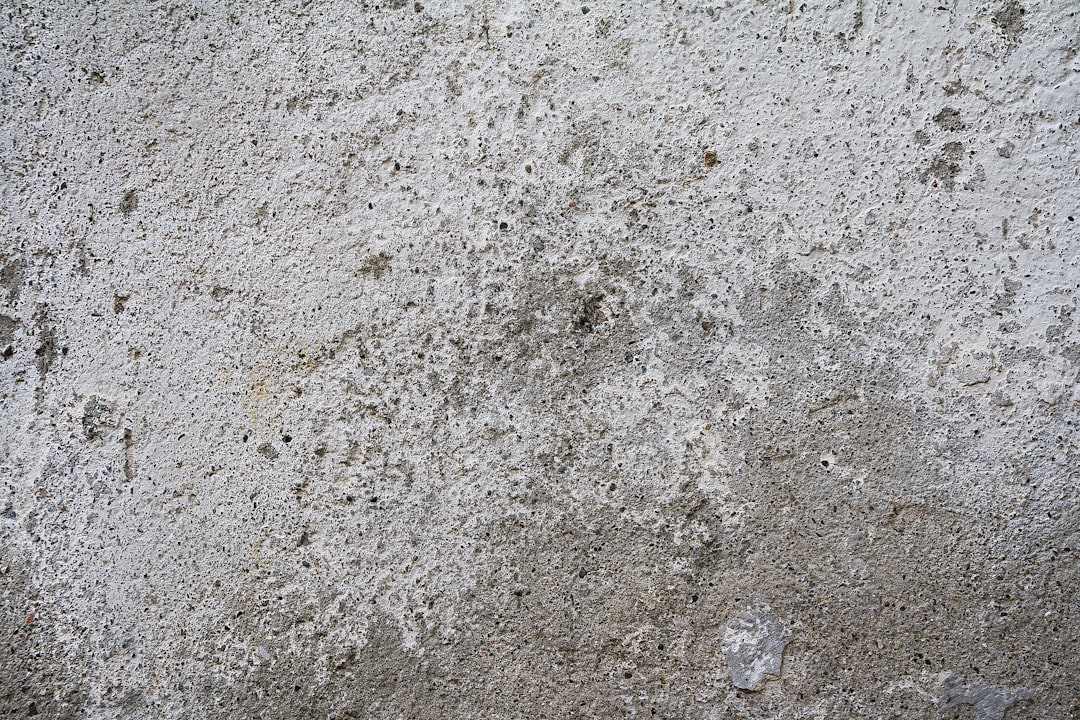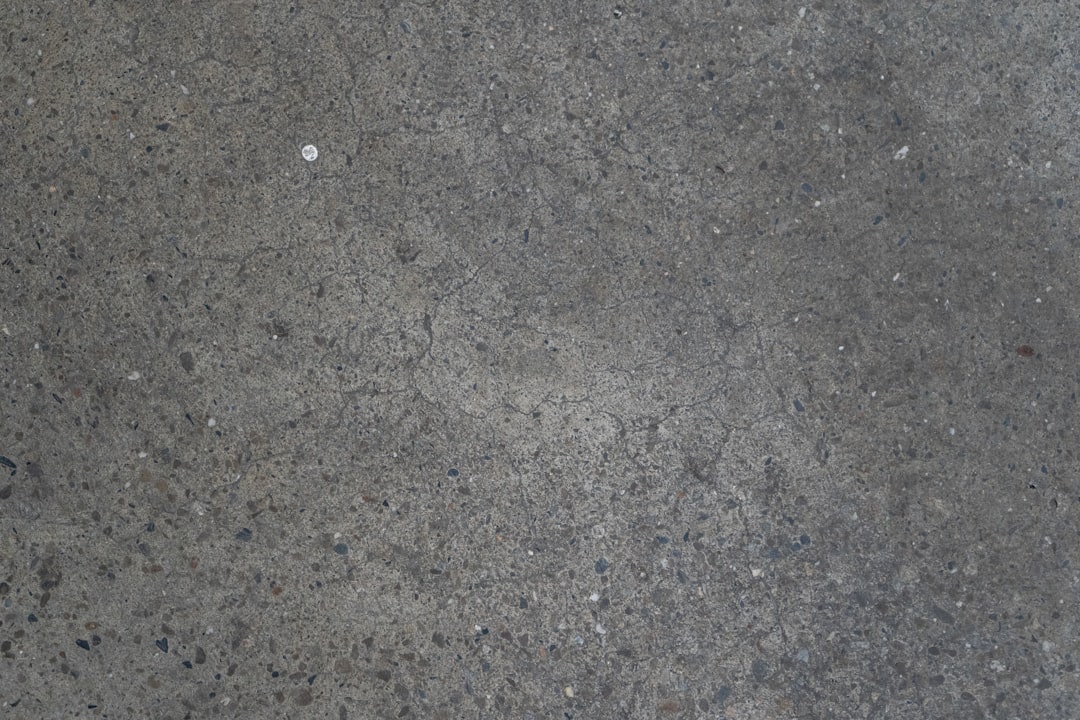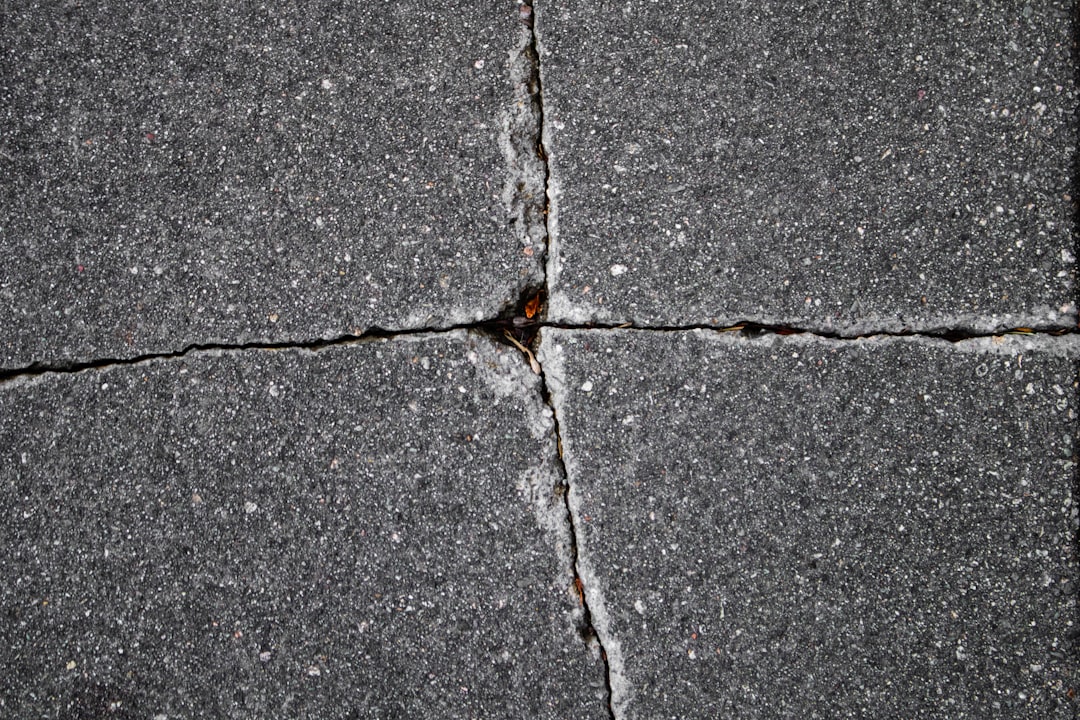

Engage prospects with a scan and streamline customer engagement with FREE QR code marketing tools by Sona – no strings attached!
Create a Free QR CodeFree consultation

No commitment

Engage prospects with a scan and streamline customer engagement with FREE QR code marketing tools by Sona – no strings attached!
Create a Free QR CodeFree consultation

No commitment
For concrete flooring contractors, connecting physical job sites, project documentation, and offline marketing with digital processes has become an urgent challenge. This is complicated by the persistent risk of missing out on high-value prospects who never leave their contact details, or by delays in collecting lead information that give competitors a head start. Prospective clients expect relevant project details, quotes, and contact information on demand, yet static brochures, manual sign-up sheets, and generic business cards often fall short when it comes to identifying and nurturing promising leads.
QR codes have emerged as a strategic asset for concrete flooring professionals, helping to overcome the gap between in-person interactions and digital engagement. They make it easier for customers to access critical information without needing a complicated app, while also providing contractors with real-time insight into who is engaging at each touchpoint. Featuring QR codes on-site, in print ads, or across vehicles and equipment allows contractors to streamline installation requests, improve repair workflows, and initiate timely, relevant follow-ups based on real-world engagement signals. These actions reduce the late capture of contact details that often lead to lost opportunities.
This article explores actionable ways QR codes can support concrete flooring contractors: from capturing demand and delivering cost estimates to providing maintenance resources. It also offers a pathway to overcome industry pain points through technology-enabled processes that integrate both online and offline client journeys, backed by trackable analytics and automation options available through platforms like Sona QR and Sona.com.

Concrete flooring firms often struggle to track all the qualified prospects who interact with their business across dozens of physical and digital touchpoints. Paper brochures get tossed, job site inquiries go unlogged, and business cards rarely translate into CRM records. This fragmented reality limits timely follow-up and allows competitors to respond faster. QR codes offer a simple, client-friendly way to turn those offline moments into measurable digital actions that flow directly into your systems.
A practical approach starts with auditing outdated, untrackable workflows and replacing them with QR-powered flows that capture context and intent. Every sign, vehicle wrap, estimate, and warranty document can become a digital entry point that routes people to high-intent actions like cost calculators, project galleries, and quote requests. When those codes are dynamic and centrally managed, teams can update destinations without reprinting and can attribute each scan to a specific placement, campaign, or job site. These steps together shorten approval timelines, eliminate needless data entry, and improve conversion rates.
For example, replacing paper quote forms with a QR-linked digital intake on job sites reduces transcription errors and accelerates the handoff to estimators. Contractors that implement these flows often see faster response times, clearer service scopes, and a noticeable lift in lead-to-opportunity conversion because the first interaction is already structured and actionable. Start creating QR codes for free.

Concrete flooring projects are often scoped and sourced in offline environments: a facilities manager seeing your crew at a hospital, a GC walking past a branded yard sign, or a homeowner noticing your vehicle in a neighborhood. These moments create interest, but traditional tactics rarely capture the opportunity in a measurable way. QR codes let those prospects take instant action and let your team understand where the opportunity originated.
Speed is a differentiator in this trade. Prospects will not download an app or hunt down a URL, and they may forget to call later. A QR code shortens the path to information and action to a single scan. If the code is dynamic, you can update the destination as your promotions change or as a project moves from bid to install. Best of all, you get trackable data: scans by location, time, and device, plus downstream form fills and booked appointments. For jobsite comparisons, see NFC vs QR codes.
In practice, contractors report improvements such as 15 to 35 percent more quote requests from print assets and faster cycle times from first touch to scheduled site visit. Those gains come from removing friction at the moment of interest and ensuring every offline impression is measurable.

Concrete flooring work spans sales, safety, and service. Each use case benefits from a specific QR format and destination. Selecting the right type ensures your audience lands in the right place and your team captures the right data.
Static codes are useful when the destination will not change, such as a safety PDF or a permanent installation guide. Dynamic codes are ideal for marketing and sales because they unlock editing, tracking, and attribution without reprinting. Platforms like Sona QR support both, along with branding and analytics.
Dynamic codes add advanced benefits such as A/B testing of destinations, device-based redirects, and on-the-fly changes to seasonal promotions. Most concrete flooring teams will rely heavily on web link and form-driven dynamic codes for lead capture and project enablement.
Growth often stalls when offline assets cannot be measured or when messaging remains generic across channels. QR codes transform your physical footprint into a performance marketing engine. See this flooring sales strategy for ideas on driving more conversions with scannable experiences.
The key is to tailor each code to the setting, the audience, and the next best action. A vehicle wrap in a logistics corridor may promote sealed industrial floors and drive to a fast quote form. A site fence sign outside a retail buildout could route to a gallery of polished concrete designs with a consult request. As scan data accumulates, you will know which corridors, neighborhoods, or events produce high-intent activity.
Contractors that deploy codes across multiple assets typically uncover surprising hotspots: a particular industrial park where scans spike on weekday mornings, or a builder supply store where leave-behinds outperform postcards. Those insights help you double down on what works.

Concrete flooring companies share a common set of friction points: slow quoting, difficulty showcasing specialized expertise, and limited visibility into post-install needs. QR code use cases address these issues by surfacing intent early, guiding buyers through the consideration path, and enabling proactive service. For broader campaign ideas, explore QR codes in marketing.
Start by mapping where prospects encounter your brand, then assign a code that drives the right action. Segment by project type such as polished concrete for retail, epoxy systems for healthcare, or heavy-duty overlays for industrial. With dynamic codes, you can point each audience to tailored content that proves fit and accelerates trust.
These use cases move clients from anonymous interest to identified prospects and loyal customers. Many contractors see a lift in first-contact quality because scans reflect genuine curiosity about a specific service or finish.
Every scan carries context. Where it occurred, what asset was scanned, and the destination that was chosen are all signals that inform your next touch. By deploying multiple codes across your assets and mapping each to a buyer stage, you create auto-segmented audiences for targeted follow-up. See Sona’s intent-driven retargeting playbook for execution steps.
Start with a simple funnel approach. Codes on broad awareness assets such as vehicle wraps should drive to educational content and soft conversions like gallery views. Consideration-stage codes such as brochures or job site signs should route to comparison guides and spec downloads. Conversion-stage codes such as proposals and pricing sheets should push to booking, deposit payment, or signature.
For concrete flooring, useful distinctions include homeowners versus commercial facility managers, new construction versus renovation, and design-driven prospects versus durability-first buyers. Align messaging and offers to each segment, then use performance data to refine.
QR codes act as connective tissue between your offline exposure and your digital engine. They make print, site presence, and events measurable, while also accelerating conversions across email, social, and paid media. With centralized management, you can orchestrate the entire funnel from scan to signed contract.
Think in terms of journeys rather than individual assets. A prospect might scan a vehicle wrap, revisit via a retargeted ad, then scan a job site sign to download specs before booking a consult. When all codes are managed within Sona QR and connected to your CRM, each step is captured and attributed, enabling precise outreach and budget reallocation.
When integrated well, QR codes create an always-on loop where offline impressions generate digital engagement, which in turn drives targeted follow-up across email, ads, and sales outreach.
Define what you want the scan to achieve, then select the right audience and placement. For concrete flooring, common goals include quote requests, maintenance ticket submissions, and portfolio exploration. Articulate the business outcome so you can measure success.
Choose between static and dynamic codes based on the need for flexibility and data. Most marketing uses benefit from dynamic codes so you can update links and attribute scans by placement.
Design influences scan rates. Make the code big enough, with strong contrast and a benefit-focused call to action. Always test in the conditions where scanning will occur.
Place your codes where they will matter most. Stagger deployments so you can isolate what works and scale proven placements.
Measurement turns QR codes from a convenience into a growth driver. Monitor performance, refine creative and placement, and iterate based on data.
Attribution in the trades has historically been murky. A prospect might see a truck, later visit a website, then call a week after scanning a job site sign. Without connected data, it is hard to credit the right touchpoints or double down on the best channels. Modern QR platforms solve this by capturing context at the source, syncing it to your CRM, and connecting scans to pipeline outcomes.
Sona QR provides a single dashboard where you can track scans by time, device, and location. With Sona, an AI-powered marketing platform that unifies attribution and activation, you can go further, tying scan activity to known contacts and mapping multi-touch journeys. When your estimator opens a new opportunity, scan history appears alongside web visits, email engagement, and ad clicks, offering a 360-degree view that informs timing and messaging for outreach.
These insights help contractors move from gut feel to data-driven decisions. Over time, you will know which neighborhoods, event days, and code placements correlate with the most profitable projects.
Launching codes is only the first step. Sustained gains come from consistent promotion, staff enablement, and automation that makes post-scan experiences delightful. Focus on clarity and immediate value so prospects feel rewarded for scanning.
Another key is to make codes ubiquitous across your customer lifecycle. From the first yard sign someone notices, to the maintenance guide they scan a year later, each code should provide a clear next step and deepen the relationship.
When teams follow these practices, scan rates rise, follow-ups happen faster, and clients experience a professional, modern workflow that reflects well on your brand.

The most effective ideas often start small: a single code on a yard sign that launches a quote form, or a maintenance placard in a warehouse that directs supervisors to a repair request. As results come in, teams expand the program across more assets and service lines. The following examples illustrate how contractors adapt QR codes to daily workflows without heavy lift. For broader jobsite workflows, see QR codes in construction.
Each idea pairs a common pain point to a simple, scannable solution. Successful implementations share two traits: clear CTAs that promise immediate value and destinations that respect a busy user’s time with concise, mobile-friendly content.
Contractors piloting similar programs often report a double-digit increase in qualified inquiries and improved close rates on targeted service lines. The bigger win is durable: a repeatable system that turns every physical asset into a trackable touchpoint.
The construction industry is undergoing a steady digital transformation with clear pressure to reduce manual steps, provide accurate documentation, and prove ROI on marketing spend. Concrete flooring is no exception. QR codes fit neatly into this shift because they do not require an app, they adapt to any surface, and they convert anonymous attention into actionable data.
Trends to watch include dynamic content delivery and identity resolution across devices. As platforms like Sona QR and Sona.com link scan data with web, ad, and CRM activity, flooring contractors gain a fuller view of buyer journeys. Teams can see when a facilities manager first scanned a job site sign, then later viewed a polished concrete gallery and finally booked a consultation. That knowledge informs smarter sequencing of content and more effective sales outreach. For measurement fundamentals, read Sona’s accurate revenue attribution guidance.
Ultimately, QR codes are not just a convenience. They are a strategy that lets concrete flooring contractors turn every physical surface into a digital entry point and every moment of interest into a measurable action. With Sona QR for code creation, management, and tracking, and Sona.com for multi-touch attribution and journey analytics, your team can capture demand at the source and convert it into predictable growth.
QR codes have transformed the concrete flooring contractors industry by turning static project materials and service information into dynamic, measurable engagement tools. Whether it’s attracting new clients, enhancing customer communication on-site, or streamlining access to detailed project specs, QR codes replace outdated paper processes with instant, mobile-friendly actions that capture valuable data to optimize your business growth.
Imagine being able to track which brochures, job site displays, or estimates generate the most leads—and updating your campaigns instantly without reprinting a thing. With Sona QR, you can create dynamic, trackable QR codes in seconds, connect every scan to customer acquisition efforts, and gain actionable insights that directly impact your bottom line. No wasted effort, no missed opportunities—just smarter, more effective marketing for your concrete flooring business.
Start for free with Sona QR today and turn every scan into a conversation, a lead, or a closed contract.
Choose a contractor who uses modern, technology-enabled processes like QR codes to streamline communication, provide timely quotes, and offer transparent project documentation for faster and clearer service.
QR codes bridge offline and online engagement by enabling instant access to quotes, project galleries, and contact forms, improving lead capture, reducing lost opportunities, and providing measurable data on customer interactions.
Contractors use QR codes for quick quote requests, digital project portfolios, maintenance and warranty resources, job site compliance access, and customer referral or review collection.
QR codes streamline workflows by digitizing intake forms, tracking scan data by location and asset, enabling fast follow-up, and linking to maintenance guides and project documentation for efficient service management.
Innovative uses include placing QR codes on vehicle wraps and equipment decals to trigger quote requests, using codes on safety boards for compliance verification, integrating codes into invoices for maintenance tickets, and encouraging user-generated content through post-project scans.
Use Sona QR's trackable codes to improve customer acquisition and engagement today.
Create Your FREE Trackable QR Code in SecondsJoin results-focused teams combining Sona Platform automation with advanced Google Ads strategies to scale lead generation

Connect your existing CRM

Free Account Enrichment

No setup fees
No commitment required

Free consultation

Get a custom Google Ads roadmap for your business






Launch campaigns that generate qualified leads in 30 days or less.
